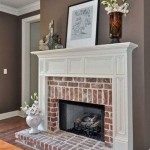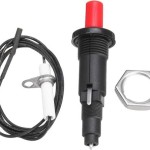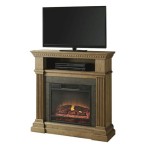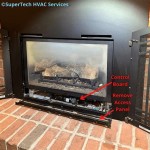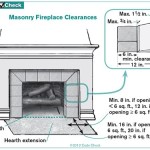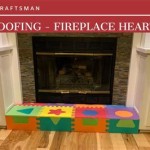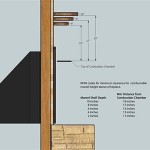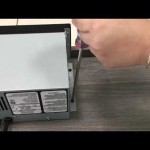Cost of Gas Fireplace Inserts: A Comprehensive Guide
Gas fireplace inserts offer an efficient and aesthetically pleasing alternative to traditional wood-burning fireplaces. They provide a convenient way to heat a room while enhancing its visual appeal. However, before investing in a gas fireplace insert, understanding the various factors influencing the cost is crucial. This article provides a detailed overview of the cost considerations associated with gas fireplace inserts, including the unit itself, installation, and ongoing operational expenses.
The initial cost of a gas fireplace insert can vary significantly based on several factors, including the brand, size, features, and heating capacity. Generally, gas fireplace inserts range in price from approximately $2,000 to $6,000 or more. This range reflects the diversity of options available, from basic models designed for smaller spaces to high-end units with advanced features and substantial heating output.
The type of gas fireplace insert also influences the overall cost. There are primarily two types: vented and ventless. Vented gas fireplace inserts require a chimney or vent to expel combustion byproducts, while ventless models do not. Ventless models tend to be less expensive upfront but might not be suitable for all homes due to concerns about indoor air quality and potential moisture buildup.
Key Factors Influencing the Cost of Gas Fireplace Inserts
Several key factors directly influence the cost of a gas fireplace insert. Understanding these factors allows for a more accurate estimation of the total investment required.
1. BTU Rating and Heating Capacity: The British Thermal Unit (BTU) rating of a gas fireplace insert indicates its heating capacity. A higher BTU rating signifies a greater ability to heat a larger space. Inserts with higher BTU ratings generally cost more due to their increased power and more robust components. Homeowners should assess the size of the room they intend to heat and select an insert with an appropriate BTU rating to ensure optimal performance and cost-effectiveness.
2. Features and Aesthetics: Advanced features such as remote controls, programmable thermostats, and realistic flame displays contribute to the overall cost. Decorative elements, including logs, fire glass, and custom surrounds, also impact the price. More elaborate designs and high-end materials will invariably result in a higher cost.
3. Brand Reputation and Warranty: Established brands with a reputation for quality and reliability often command higher prices. These brands typically offer more comprehensive warranties and better customer support, providing added peace of mind. While less expensive options might be tempting, investing in a reputable brand can potentially save money in the long run by minimizing the risk of repairs and replacements.
Beyond the initial purchase price, installation costs represent a significant portion of the overall expense. Installation typically involves preparing the existing fireplace, running gas lines, connecting venting (if required), and ensuring proper operation of the insert. These tasks often require the expertise of qualified professionals, such as gas fitters and HVAC technicians.
Installation costs can vary depending on the complexity of the project and local labor rates. Simple installations that involve minimal modifications to the existing fireplace and gas lines may cost around $500 to $1,000. However, more complex installations that require extensive modifications, such as running new gas lines or installing a chimney liner, can cost several thousand dollars.
It is advisable to obtain multiple quotes from different contractors to ensure a competitive price. When comparing quotes, it is essential to consider the experience and qualifications of the contractor, as well as the scope of work included in the estimate. A detailed and transparent quote should outline all aspects of the installation process, including labor, materials, and any necessary permits.
Permitting requirements can add to the overall cost. Most municipalities require permits for gas fireplace insert installations to ensure compliance with safety codes and regulations. The cost of permits varies depending on the location and the scope of the project. Failing to obtain the necessary permits can result in fines and delays.
Another cost consideration is the potential need for fireplace modifications. In some cases, the existing fireplace opening may need to be modified to accommodate the new gas fireplace insert. This may involve widening or heightening the opening, as well as reinforcing the surrounding masonry. These modifications can add significantly to the overall installation cost.
Operational Costs of Gas Fireplace Inserts
While the initial purchase and installation costs are significant, ongoing operational expenses also need to be factored into the overall cost analysis. These operational costs primarily consist of the cost of natural gas or propane, as well as maintenance expenses.
1. Fuel Costs: The cost of natural gas or propane varies depending on local utility rates and usage patterns. Natural gas is generally less expensive than propane, making it a more cost-effective fuel source for those with access to a natural gas line. The amount of gas consumed by a gas fireplace insert depends on its BTU rating and the frequency of use. Periodic increases in seasonal prices may also occur.
2. Maintenance Expenses: Regular maintenance is essential to ensure the safe and efficient operation of a gas fireplace insert. Maintenance tasks typically include cleaning the burner assembly, inspecting the venting system, and checking the gas connections. It is recommended to have a professional service the gas fireplace insert annually to identify and address any potential issues. Maintenance costs can range from $100 to $300 per year, depending on the complexity of the service and local labor rates.
3. Electricity Costs: Some gas fireplace inserts require electricity to operate the blower fan, remote control, and other features. The electricity consumption of these features is generally minimal but should still be considered in the overall cost analysis. The cost of electricity will depend on local utility rates and the usage patterns of the insert.
Homeowners should also consider the potential energy savings associated with using a gas fireplace insert. Compared to traditional wood-burning fireplaces, gas fireplace inserts are significantly more efficient, converting a higher percentage of fuel into usable heat. This increased efficiency can result in lower heating bills and reduced energy consumption. Furthermore, gas fireplace inserts offer zone heating capabilities, allowing homeowners to heat only the rooms they are using, further reducing energy costs.
When evaluating the cost-effectiveness of a gas fireplace insert, it is important to compare it to other heating options, such as electric space heaters, central heating systems, and wood-burning fireplaces. Each heating option has its own advantages and disadvantages in terms of cost, efficiency, and convenience. A thorough comparison will help homeowners determine the most appropriate heating solution for their needs and budget.
Financing options can help make the purchase and installation of a gas fireplace insert more affordable. Many retailers offer financing plans with low-interest rates or deferred payment options. Home equity loans and lines of credit can also be used to finance the project. Before committing to a financing option, it is important to carefully review the terms and conditions, including the interest rate, repayment schedule, and any associated fees.
Maximizing Value and Minimizing Costs
Several strategies can help homeowners maximize the value and minimize the costs associated with gas fireplace inserts.
1. Research and Compare: Thoroughly research different brands, models, and features to find the gas fireplace insert that best meets their needs and budget. Compare prices from multiple retailers and contractors to ensure a competitive price. Seek out customer reviews and ratings to assess the reliability and performance of different products.
2. Negotiate Prices: Don't be afraid to negotiate prices with retailers and contractors. Inquire about discounts, rebates, and promotional offers. Bundling the purchase and installation of the gas fireplace insert with other home improvement projects may also result in cost savings.
3. Consider Efficiency: Choose a gas fireplace insert with a high efficiency rating to minimize fuel consumption and reduce heating costs. Look for models with features such as programmable thermostats and zone heating capabilities to further optimize energy savings.
4. Proper Maintenance: Adhering to a regular maintenance schedule can help prevent costly repairs and extend the lifespan of the gas fireplace insert. Perform routine cleaning and inspections, and schedule annual servicing by a qualified professional.
5. DIY Options: While professional installation is generally recommended, some homeowners may be able to handle certain aspects of the installation process themselves, such as preparing the fireplace opening or running electrical wiring (if they are qualified to do so). However, it is important to exercise caution and follow all safety guidelines when performing DIY tasks. Improper installation can result in safety hazards and void the warranty.
In summary, the cost of a gas fireplace insert encompasses the initial purchase price, installation expenses, and ongoing operational costs. By carefully considering these factors and adopting cost-saving strategies, homeowners can make informed decisions and maximize the value of their investment. Choosing the right gas fireplace insert can provide years of comfortable, efficient, and aesthetically pleasing heating.

How Much Does A Gas Fireplace Cost Fireplaces Direct Learning Center

Gas Fireplace Cost Guide Unit Add Ons Installation More

Gas Fireplace Inserts Pros And Cons Of Ventless Fireplaces

How Much Does A Gas Fireplace Cost Fireplaces Direct Learning Center

Estimated Page Fireplaces Stoves Inserts Wood Gas Pellet

Fireplace Inserts Nw Natural Appliance Center

Gas Fireplace Insert Cost Forbes Home

Gas Fireplace Insert Propane Regency Vermont Castings Napoleon

A Step By Guide To Understanding Fireplace Inserts

2024 Gas Fireplace Insert Costs
Related Posts

